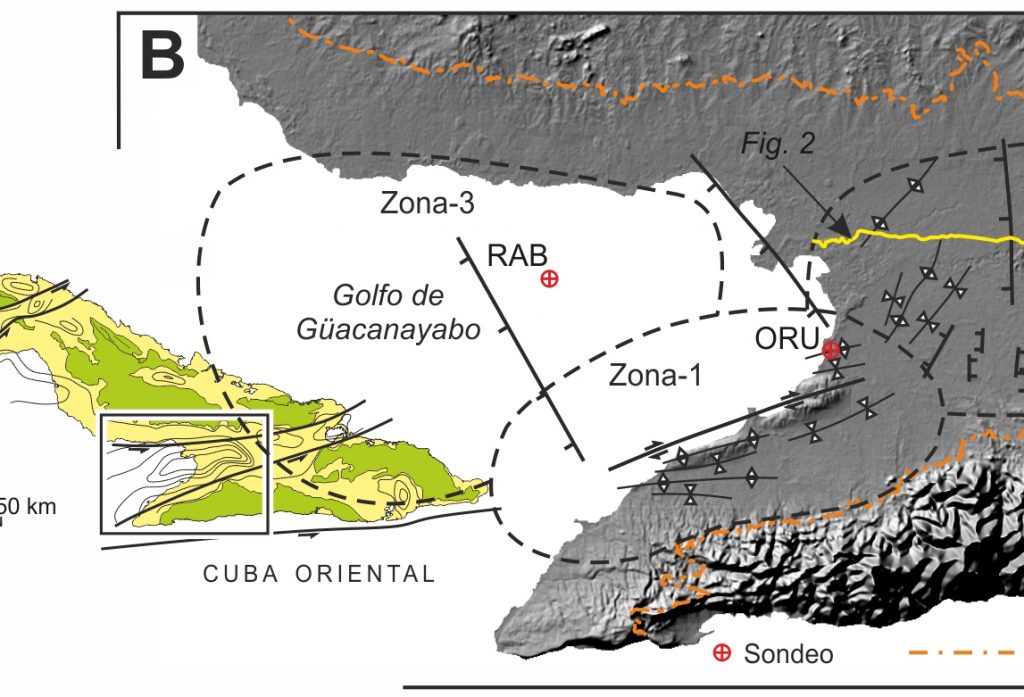The Cauto-Güacanayabo Basin is the largest strike-slip basin related to the Güacanayabo-Nipe tectonic corridor, located in eastern Cuba. The Cauto-Güacanayabo Basin started at Middle Eocene times and most of the basin re-mains active. It is limited by both, extensive and compressive faults related to transtensional and transpressional tec-tonics. Although both could appear closely and be coetaneous, there are a rough arrangement in the fault orientation and distribution across the basin. In general terms transpressional faults strike in a NE-SW to ENE-WSW direction and are dominant in the southern part of the basin, whereas transtensional faults striking a N-S to NNE-SSW direc-tion and are dominant in the northern and eastern parts of the basin. The Cauto-Güacanayabo sedimentary infill has variable thickness, reaching more than 2500 m. Four main basin-scale unconformities called U0 to U3 have been rec-ognized allowing us to subdivide the sedimentary record in four tectono-stratigraphic units called, from bottom to top, A, B, C and D.
Yaniel Misael Vázquez Taset se graduó de Ingeniero Geólogo, en el Instituto Superior Minero Metalúrgico “Dr. Antonio Núñez Jiménez”, Cuba en el 2004. En la misma institución, en el 2006, defendió la Maestría en la Mención Geología Regional. El doctorado lo hizo en la Universidad de Barcelona, España; sustentándolo en Mayo del 2014. La carrera investigativa la ha desarrollado principalemente en el estudio de Cuencas Sedimentarias, asociadas al Orógeno Cubano.

